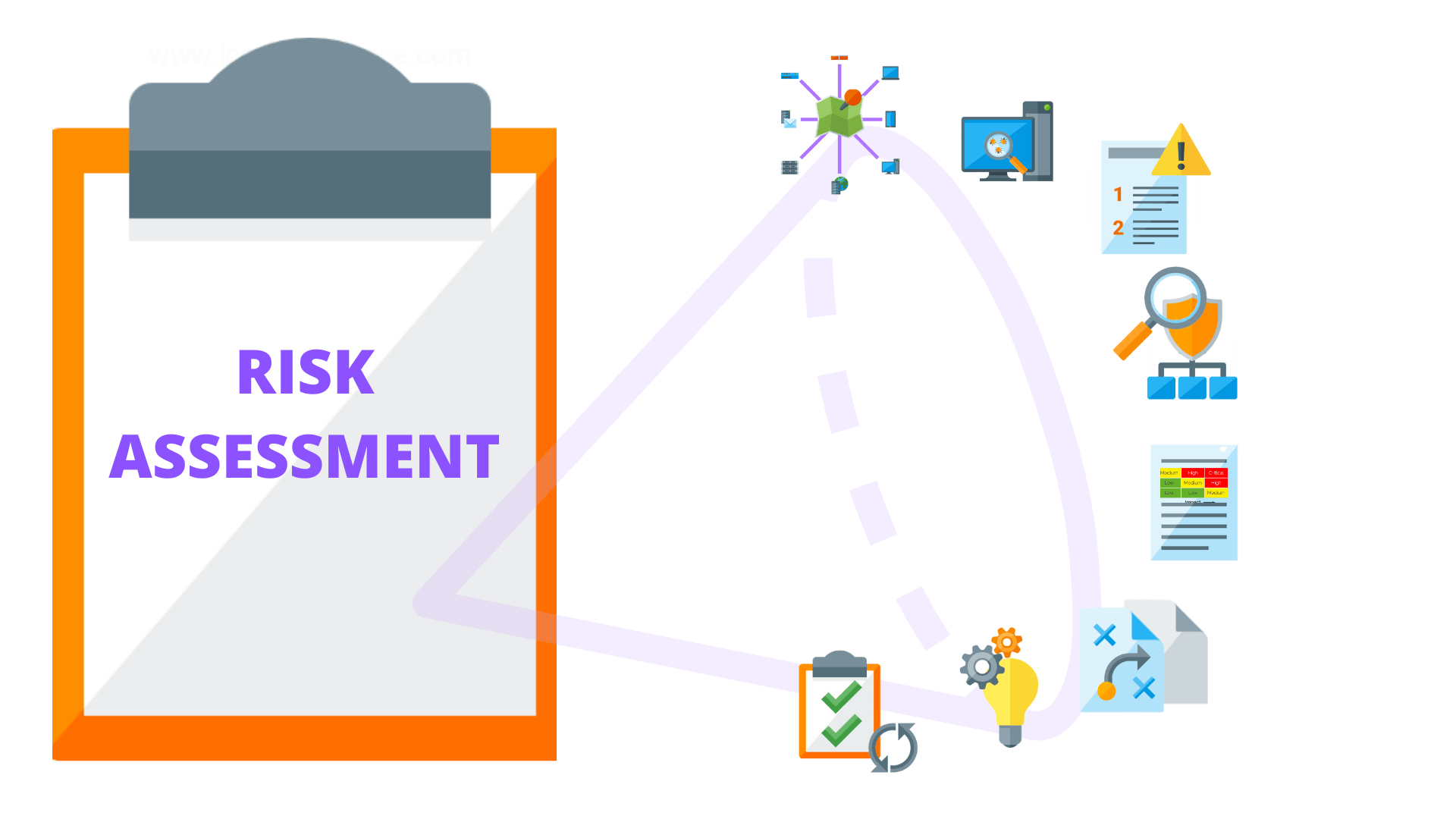An information security risk assessment evaluates the cybersecurity risks posed by an organization’s technologies and applications, playing a crucial role in enterprise risk management. It identifies threats to systems, devices, applications, and networks, followed by risk analysis and the implementation of security controls to mitigate them. These assessments are essential for both cybersecurity and regulatory compliance and can be conducted internally or by third-party assessors. While third-party assessments may be costlier, they are beneficial if internal reviews uncover significant security gaps or if the organization lacks a dedicated IT security team. Here are our top picks:
Table of Contents
What is Security Risk Assessment?

Security Risk Assessments (or SRAs) are assessments that identify the risks and technology in your company. They also verify that your controls are in place to protect against security threats. Compliance standards often require security risk assessments such as PCI DSS standards for payment card security. AICPA needs these standards in a SOC II audit of service organizations. They also serve as requirements for ISO 27001 compliance, HITRUST CSF, and HIPAA compliance. Security risk assessments are sometimes called IT infrastructure risk assessments or risk assessments. A security assessor will perform security risk assessments for your company. They will examine all aspects of your system to determine potential risks. These could be as simple as weak passwords or more complicated issues like insecure business processes. The assessor will usually review everything, from firewall configurations to HR policies, to help identify potential risks.
An assessor, for example, will identify any databases that contain sensitive information or assets during the discovery process. This database is connected to the internet, which can be a vulnerability. You need to put in place a control system to protect this asset. It would be called a firewall. This is the first step toward mitigating risk.
A Security Risk Assessment will identify all of your company’s critical assets, vulnerabilities, and controls to ensure you are adequately reducing your risk. It also addresses application security vulnerabilities and defects. An organization can view its application portfolio holistically through a risk assessment. It assists managers in making informed decisions about resource allocation, tooling, security control implementation, and other related matters. An assessment is an essential part of any organization’s risk management program. The depth of risk assessment models can be affected by asset portfolio, size, growth rate, resources, or assets. When time or budget constraints are present, organizations can perform generalized assessments.
Generalized assessments do not necessarily include detailed maps of assets, associated threats, impact, and mitigating control. A more detailed assessment may be necessary if general assessment results are insufficient to show a strong correlation between these areas. Let’s have a look.
Why do you need a Security Risk Assessment?
Security Risk Assessments are essential for protecting your company against security threats. Imagine being tasked with remodeling a house without being informed about its problems.
An assessment of security risks provides you with a blueprint of the threats in your environment and vital information about the importance of each issue. When improving security, knowing where to start can help you maximize your IT budget and resources, saving you both time and money.
How can a Security Risk Assessment Help Solve Problems?
This guide will help you determine the best way for you and allow you to complete your security assessment requirements. Here are some things to remember when conducting a security risk assessment.
- Identify assets (e.g., tools, network, data centers, servers, applications, etc.) Recognize assets within the organization.
- For each asset, create risk profiles.
- Learn what data is stored, transmitted, and generated by these assets.
- Assess the risk ranking of assets and determine the most important for your assessment.
It is essential to realize that security risk assessments are not a one-time project. It should be a continuous activity done at least every other year. A continuous assessment gives organizations a snapshot of the threats and risks they are exposed to by providing them with an up-to-date and current picture.
We recommend an annual assessment of critical assets with a more significant impact and a higher likelihood of risk. The assessment process collects valuable information. A few examples include:
- Create an application portfolio that consists of all current tools and applications.
- Documenting security policies and procedures.
- An asset inventory of physical assets is created (e.g. hardware, network, and communication components and peripherals).
- Information about operating systems (e.g. PCs and server operating systems)
- Current baseline operations and security requirements regarding compliance with governing bodies.
Difference between Risk Management & Security Risk Assessments

This is the most frequently asked question regarding security and compliance requirements. A security risk assessment is a quick review of your company’s technology, people, and processes to find problems. Risk management is an ongoing process that identifies all risks within your company and works towards eliminating them. Security Risk Assessments can be profound dive assessments of your company or even a specific department or IT project.
Identifying security gaps and problems during assessments is essential before they become a problem. Reviews should examine and test people and systems to find weaknesses. They are ranked according to how risky they pose to the company. This report will highlight secure and working systems and those that need improvement. A Security Risk Assessment will usually include specific technical results such as network scanning and firewall configuration results.
Risk Management is an ongoing effort that collects all known problems and works to solve them. A Risk Management meeting is a management meeting that meets every other week or monthly. Problems and risks are identified weekly to ensure nothing slips through the cracks. A Risk Management process aims to improve company security and eliminate threats.
What are the Elements of Security Risk Assessment?
It is essential to identify all areas of cyber risk using a comprehensive approach. A comprehensive risk assessment should not be limited to IT professionals. It should include representatives from all departments that can identify and contain vulnerabilities. It would help if you looked for people familiar with how data is used within your company.
Depending on your company’s size, putting together an IT risk assessment team can be challenging. Larger organizations may prefer to have their IT departments lead the effort. However, smaller businesses might be able to outsource the task to an IT company that specializes in IT risk assessment. An organization can have a comprehensive security assessment that allows them to:
Risk Profile Creation
Risk profiles allow you to assess the risk associated with specific assets and determine their impact on your overall risk landscape.
Risk profiles allow creating security requirements independent of digital or physical information assets. This helps to reduce security standards costs within the organization.
Identification
Security risk assessments can help you identify your company’s most critical technology assets and the sensitive data they create, store, transmit, or transmit. This information is essential for developing risk management strategies tailored to your company’s needs.
It is time-consuming to identify risks. This involves validating each of these risks:
- The asset (the value that is to be protected).
- The threat (which could affect the asset).
- The danger (the vulnerability that threatens the asset)
There are many vulnerabilities and threats. You must identify risks that compromise confidentiality, integrity, and data availability. To avoid duplication of efforts, review the current controls.
Assets Prioritization
Prioritization of assets with the increasing number of security threats discovered each day, your company will undoubtedly suffer a data breach or cyberattack at some point.
Prioritizing your assets helps you recover your business processes in an unexpected event, such as a natural catastrophe or cyberattack.
Threat Identification
Any event that causes harm to your organization’s assets or processes can be considered a threat. Many hazards can occur, including external or internal.
While many threats may be unique to your company, others are common to your industry. It is therefore essential to screen for all possible threats.
Vulnerability and Cybersecurity Risk Prevention
When conducting risk assessments, it is crucial to assess the effect of remediation policies on security posture.
High-risk infrastructure can be protected from cyber threats by using access controls, advanced authentication methods, firewalls, vulnerability scanning, and penetration testing.
How Do You Conduct Security Risk Assessments?
Security risk assessments should cover all aspects of a business, including information technology, operations, human resources, and accounting.
Assessments are time-consuming and labor-intensive. Each review is valuable if it follows a proven method. These steps will help you to perform a thorough evaluation.
Which Industries Require Security Risk Assessments?
Each company handles sensitive data. Many companies need personally identifiable information (PII) or personal health information for corporate operations.
These data are provided by clients, partners, and customers. These industries require periodic risk assessments.
Public Companies
To comply with SOX Section 404, these organizations must conduct a top-down assessment of risk (TDRA).
The purpose of the TDRA (Testing the effectiveness of a company’s internal controls) is to assess the effectiveness of those controls. Depending on the company’s size, it may require an external auditor to be implemented.
Payment Card Industry
Conforming to the Payment Card Industry Data Security Standard (PCI DSS) 12.2, any business that accepts or processes payment cards must conduct a risk assessment every year and when significant environmental changes occur.
During the risk assessment, it is essential to identify all critical assets, threats, vulnerabilities, and the effect on cardholder data environments. The risk assessment should include a formal and documented risk analysis.
Healthcare Industry
Health Insurance Portability and Accountability Act (HIPAA) mandates all covered entities and business associates to conduct risk assessments to identify risks and avoid data breaches.
An assessment must be done if a data breach has been identified. This will determine the risk to individuals and help to communicate.
Conclusion
A security risk assessment can improve an organization’s security position. This is vital in today’s increasingly uncertain world. An organization can improve its security by conducting security risk assessments. They can help companies identify weaknesses, develop new security requirements, and spend more intelligently on cybersecurity budgets.
If you have enough IT staff to handle large organizations, it is worth having them. They will be able to gain a deep understanding of your data infrastructure. If your business is small, you may have to outsource this task to a specialist risk assessment company.